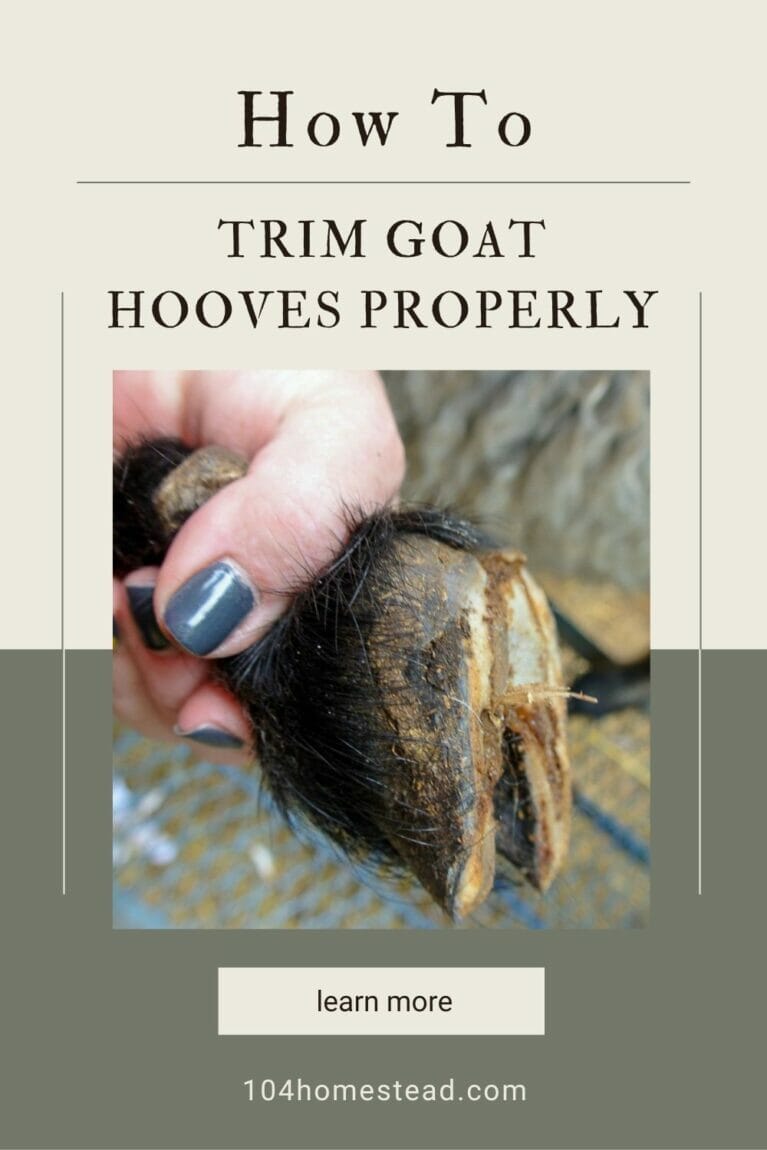Goat Hoof Care: How to Trim Goat Hooves Correctly + Goat Hoof Health
Learn how to properly trim goat hooves with this guide. We’ll also cover other aspects of hoof health you may experience in your herd.
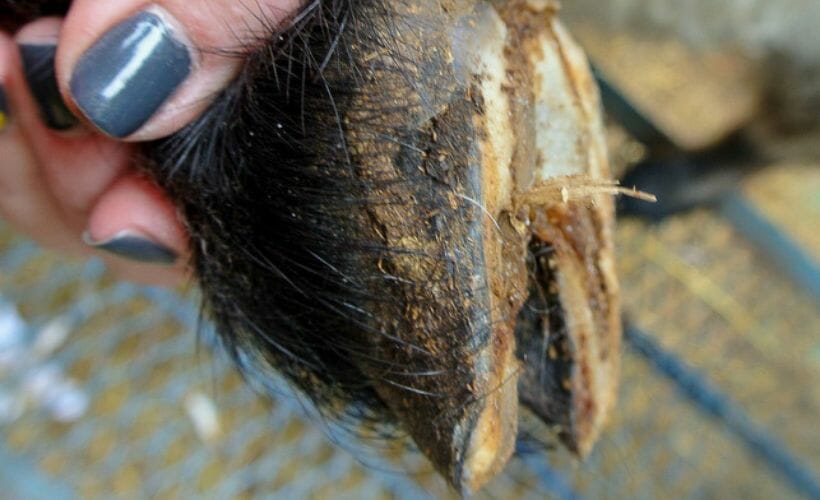
Goat hoof care is a task you sign up for when you bring home cute baby goats. You can hire someone to come out and do it, but it’s an unnecessary cost and headache when you can easily do it yourself. Goat hoof care begins early in life and is a regular part of maintaining a healthy herd. You have some time before the kids are big enough to need an actual hoof trim, but getting them used to having the hoof touched and examined early, will make it easier when necessary.
Why is Goat Hoof Care Needed
The goat hoof is a cloven hoof like in cattle and other ruminants. The split hoof provides a space between the two halves where moisture, dirt, and manure can be trapped. A moist, warm environment is an ideal spot for bacterial and fungal growth. Add to this, an overgrown hoof on the outer edges, folding under the hoof, and you have the perfect beginning of a hoof problem.
Does trimming hooves hurt goats?
Just like trimming your fingernails, properly trimming a goat’s hooves should not be painful, though some goats may not prefer the restraint required to properly assess and trim their hooves.
How often do goats need hoof trims?
Plan on trimming your goat’s hooves about every 6 to 8 weeks. Remember, the longer you let your goat’s hooves get, the harder the job will be.
How do I know when a goat’s hooves need to be trimmed?
If the hooves look like they are curling (outward or inward) or appear to have “elf toes,” then it’s time to trim.
What is Needed for a Trimming Goat Hooves
A milking stand or some sort of goat restraint will make the hoof care easier. Using a stand brings the goat up off the ground and shortens the distance you need to bend over to trim the goat hoof. A good quality pair of hoof trimmers/shears will make the task much easier, too. There are many hoof trimmers on the market. I prefer this pair.
Secure the goat and ask another person to assist if you have a touchy goat. In my experience, all goats are a bit insecure about hoof trimming. My most docile goats are the worst ones to trim! The female goats seem to particularly hate the back hooves being trimmed.
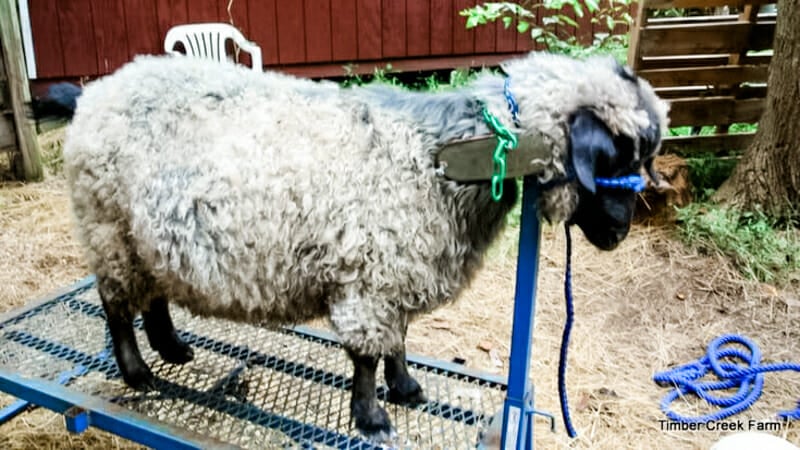
Once the goat is secured, you can start to examine the first goat hoof. Firmly, but gently grasp the first front leg, running your hand down the leg to the hoof. Bend the leg at the knee so you can take a good look at the bottom of the goat hoof. You may need to clear some debris to have a clear view of the hoof. A horse pick with a brush comes in handy. If the hoof has an overgrowth of the hoof wall, it will look like a flap under the hoof. Carefully pry this up with the hoof pick or the shears and begin to snip it off.
Knowing the Natural Shape of Goat Hooves is Important as You Begin to Trim
The normal goat hoof is a wedge shape. Do not trim any material from the center portion of the hoof. This is the live tissue area and should not be trimmed. Trim the excess hoof growth from the sides and pointed toe, until the wedge shape is returned. When a goat has to walk around on overgrown hooves, he will begin to put pressure on the legs and the wrong parts of the hoof. Eventually, the overgrown hoof will lead to lameness.
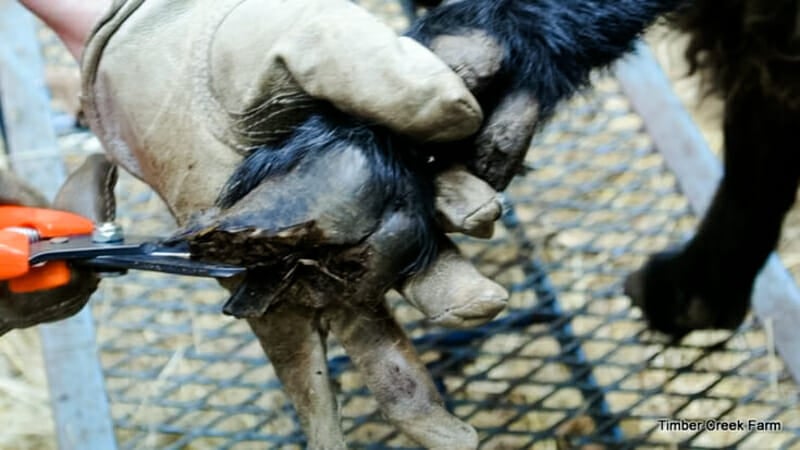
Inspect between the hoof sections. Also, take a look at the area where the leg meets the hoof for any wounds. Treat any open sores with an antibacterial spray or salve. If you should happen to trim the hoof too far and there is slight bleeding, don’t panic. Have some cornstarch in your farm first aid box. Apply the cornstarch to the open nick. The cornstarch will act like a styptic powder to stop the blood flow.
Goat Hoof Rot, Foot Scald, and Other Hoof Issues
How do you recognize a case of goat hoof rot? Your nose might be the detective in this case. There is a distinct, foul odor to the hoof when hoof rot is present. This is a painful condition for the goat. The animal may hold one foot up off the ground or limp. Sometimes the goat will stay down on the front knees to avoid putting pressure on the front hooves. Hoof scald is the precursor to hoof rot.
In goats, hoof rot is usually bacterial first, then leading to fungal growth too. Often the culprit is fusobacterium necrophorum, in conjunction with Dichelobactor-nodosus. Warm, wet conditions play a part in the occurrence of hoof rot. Once present in a herd, it is hard to stay ahead of the ailment.
Treatment for hoof rot usually calls for soaking in a copper sulfate or zinc sulfate solution. Over-the-counter products such as Hoof and Heel might be enough for early cases of hoof rot. When treating for hoof rot, first trim the hoof, then treat for the hoof rot. Learn more about foot scald and foot rot at Perdue University.
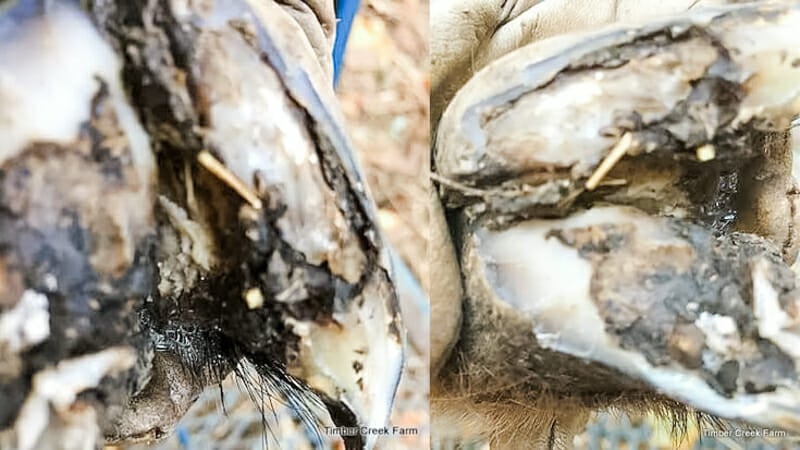
Extreme cases of goat hoof rot can lead to the splitting of the outer hoof from the inner hoof. This gives bacteria a great place to hide, making it even more difficult to eradicate.
Preventing Cases of Foot Scald, Hoof Rot, and Other Goat Hoof Diseases
Good management is key to avoiding any goat hoof problems. Keeping pastures from flooding, keeping stalls dry and bedding fresh are some things that will help. Regular hoof inspections and trimming are necessary for proper foot health. Treat any problems promptly. Since hoof rot is contagious, any new herd members should be watched closely during quarantine for any signs or symptoms of hoof rot.
